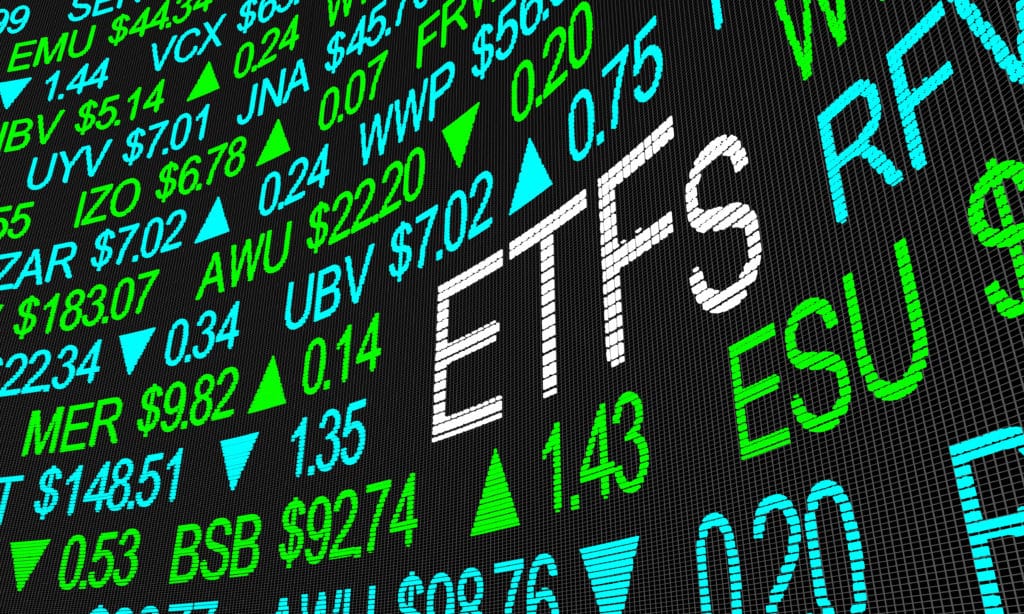

Active exchange-traded funds represent 49% of all ETFs by count, and their numbers will soon overtake index ETFs, according to Ben Johnson, head of client solutions, asset management at data provider Morningstar.
Johnson wrote that assets under management for active ETFs have reached $995bn, although fully discretionary active ETFs still account for a minority of overall active ETF assets.
“But on a combined basis, their share is growing,” he added. “The future of “active” ETFs will look more like what most people think of when they think active–especially when ETF share classes arrive.”
Big Active ETF Milestones on the horizon:
1.) At ~$995 Bil active ETF AUM is within spitting distance of the Cuatro Comas Club
2.) By count, active ETFs now represent ~49% of all ETFs. Soon there will be more active ETFs than index ETFs
3.) Fully discretionary active ETFs still… pic.twitter.com/kKkoKd05Xp— Ben Johnson, CFA (@MstarBenJohnson) February 20, 2025
Assets invested in actively managed ETFs listed globally reached a new record of US$1.17 trillion at the end of 2024 according to ETFGI, an independent research and consultancy firm, beating the previous record of $1.15 trillion at the end of November 2024.
Actively managed ETFs gathered net inflows of $41.8bn in December 2024, taking annual net inflows to a record $374.30bn, overtaking the previous high of $184.1bn in 2023. Fixed income focused actively managed ETFs listed globally attracted net inflows of $139.8bn in 2024, much higher than the $57.6bn in net inflows in 2023.
There were 3,217 actively managed ETFs from 522 providers listed on 39 exchanges in 31 countries at the end of 2024 according to ETFGI.
Alison Hennessy, head of ETP listings at Nasdaq, said on a webinar that issuers are taking a barbell approach to the ETF market, with a growth in active ETFs at one end of the market and low costs remaining important at the other end, She spoke on the ETF Trends & Future Outlooks webinar hosted by the World Federation of Exchanges on 5 February 2025.
Hennessy said the majority of new ETF launches in the US in 2024, approximately 500 out of 750, were active strategies, up from about 350 active ETFs launched in 2023. As a result nearly a third, 30%, of assets went into active ETFs in 2024 out of more that $1 trillion of inflows into about 4,000 US listed ETFs in 2024. The barbell approach was demonstrated by approximately 40% of inflows also into ETFs priced at five basis points or less.
Thomas Bonville, Head of Derivative Sales at Clear Street, a cloud-native fintech, prime broker and swap dealer, said on the webinar: “There has been a proliferation of non-traditional ETFs such as single stock, leveraged, inverse or option-based strategies. An investor can potentially find whatever they are looking for.”
Europe
In Europe active ETFs had $19.45bn of inflows in 2024, a 68% year-on-year increase, which took total assets to $55.43bn according to a report from HANetf. The white label ETF issuer said the number of active ETFs in Europe has more than tripled in the past five years
In addition nearly all, 94%, of wealth managers across Europe expect to increase their use of active ETFs over the next 12 months according to a survey in January 2025 from HANetf.
“The survey also found that, for investors, the biggest barrier to investing in active ETFs is limited product availability in Europe,” added HANetf. “That appears to be changing.”
For example, in February 2025 HANetf partnered with Jupiter Asset Management to launch the manager’s first active ETF, Jupiter Global Government Bond Active UCITS ETF (GOVE).
Matthew Beesley, chief executive of Jupiter, said in a statement: “We know that the greater transparency, speed of execution and competitive pricing points mean that clients are looking to increase their exposure of active ETFs. We believe Jupiter’s truly active investment approach and differentiated product offering leave us very well placed to grow assets in this exciting new area.”
Research in Finance also said in a report that active ETFs are beginning to make their mark in Europe. The data provider said passive ETFs remain the clear European favourite, with 92% of intermediaries who use ETFs offering them, but active ETFs are growing at a substantial rate.
Mark McFee, editorial and insights director at Research in Finance, said in a statement: “Our latest research highlights that active ETFs have piqued the interest of many European intermediaries already using ETFs in general.”
The firm’s European ETF study found that out of existing ETF users, 49% of intermediaries are now recommending and allocating active ETFs. The firm surveyed 450 retail fund buyers and distributors who use ETFs. The biggest advantage of active ETFs, voted for by 41%, is the potential for outperformance compared to passive.
The potential for underperformance is the biggest drawback according to 48% of the survey.
“When it comes to active ETFs, J.P. Morgan is considered the market leader, mentioned by 35%,” added Research in Finance. “This is followed closely by BlackRock / iShares at 34%, which belies the fact that the firm is at an earlier stage of active ETF development in Europe.”
The survey found 43 asset managers mentioned for active ETFs, nearly double the 22 mentioned for passive. This suggests there is a lesser concentration of active ETF providers in the minds of fund buyers, with a wider competitive field according to Research in Finance.











